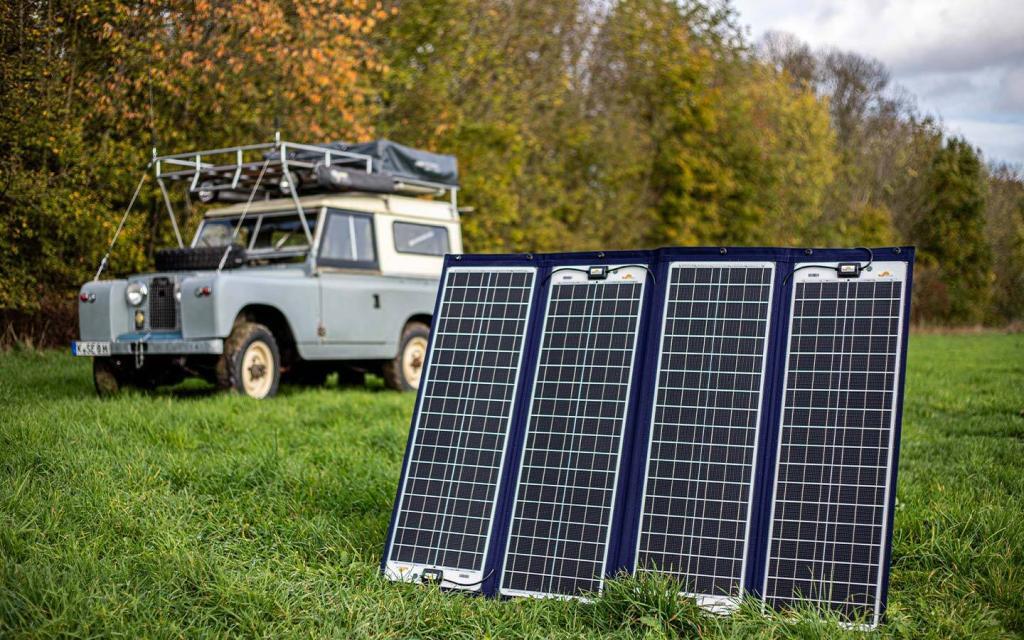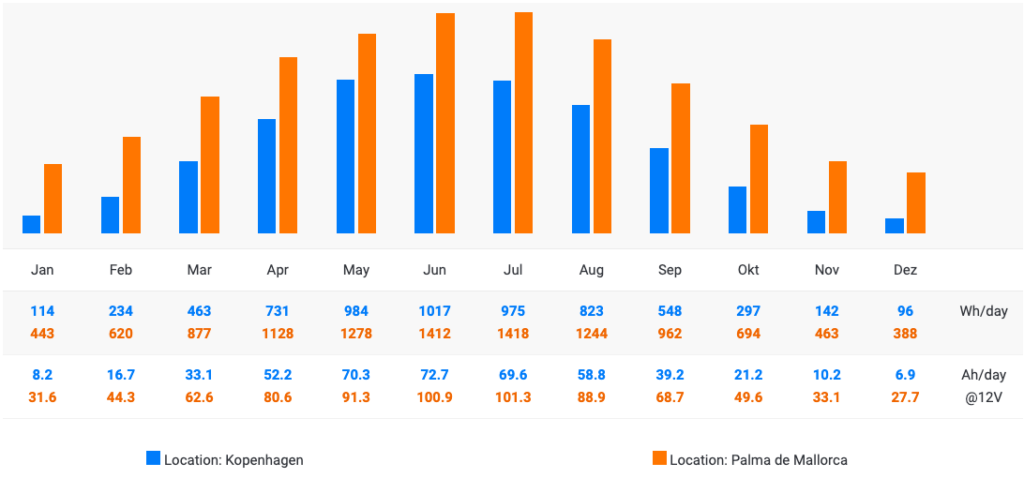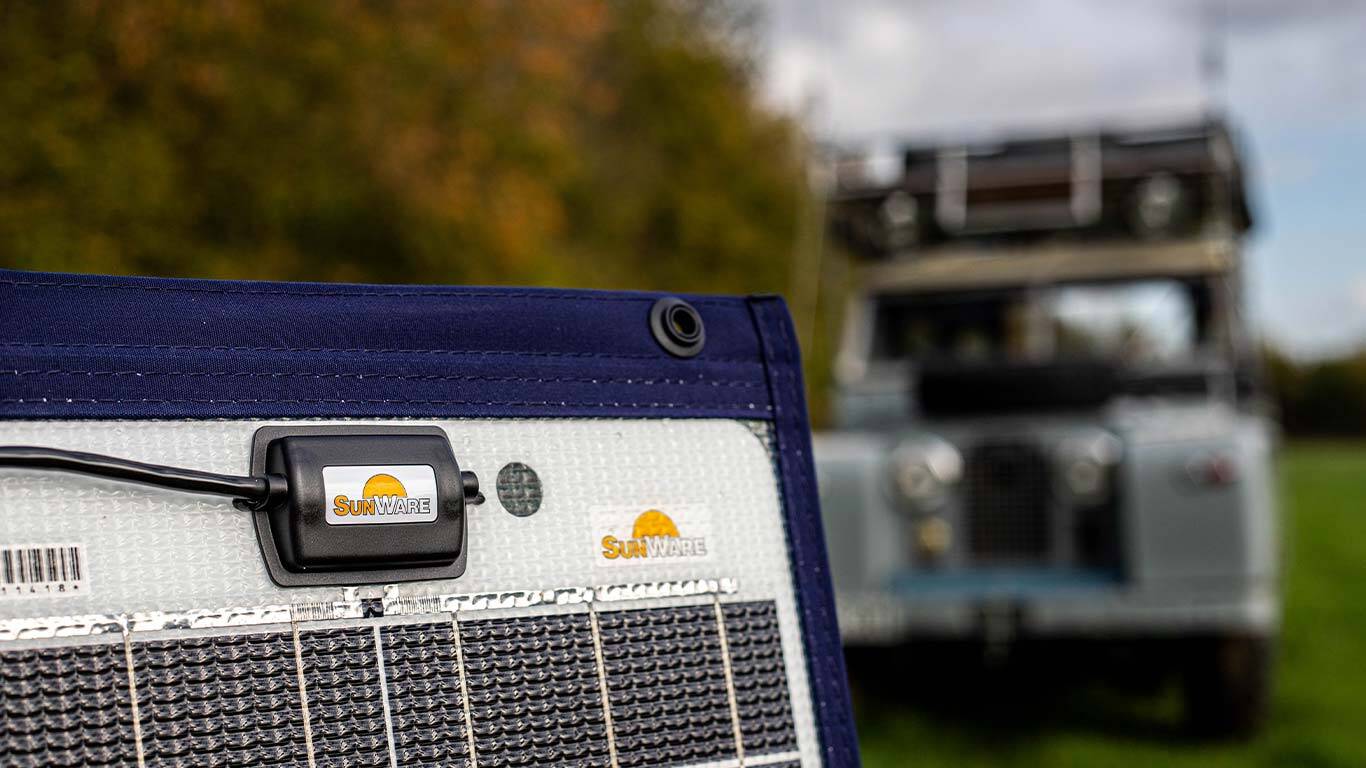Since writing about the domestic electrical system installed in my Land Rover in 2020, several components have been either replaced or upgraded in response to changing work and travel habits. Fundamentally, I have maintained my own personal approach to overlanding: minimalist like a motorcyclist, but with a roof. In other words, I don’t carry more than I really need. However, with preparations for Cape Cold to Cape Hot 2024 in full swing, new challenges mean changes to the solar strategy.
ELECTRICAL STRATEGY
My onboard electrical strategy follows basic overlanding principles and is divided into two independent systems: 1) the starter battery for the engine and vehicle related electronics, 2) two 100 Ah batteries for domestic purposes such as:
- Interior lighting
- Exterior (camp) lighting
- Dometic CFX3 55 fridge/freezer
- Famous-Water water filtration pump
- Powering/re-charging computers, cameras, drones, phones and other handheld devices
In practice, the domestic batteries will be charged by the car’s alternator whilst travelling. However, we expect to be stationary for several days at a time when we dedicate ourselves to journalism, recreation or assisting with conservation and humanitarian projects.
With the engine turned off and no land connections, battery health in remote areas will depend upon solar panels.
RIGID OR FOLDABLE PANELS?
In my case, this isn’t really debatable. I don’t have a large truck with roof space for several permanently installed rigid panels. Instead, I drive a Land Rover or Range Rover Classic fitted with full-length roof racks. Even if I did have the space for permanently installed panels on the roof, I really don’t want to park in the blazing sun where the interior will heat up like a greenhouse. Dog owners will certainly appreciate the benefit.
A foldable solar module with a good length of cable means I can enjoy the shade and still reap maximum solar energy.

EVOLUTION
My SunWare experience so far has evolved from the RX-21052 (60 Wp) to the RX-22052 (120 Wp), both 12 V modules. However, to meet current and future requirements, I have opted for the SunWare TX-42252, a 24 V 240 Wp module, which should be more than ample.
Why 24 V when I have a 12 V system? Because I can use an extension cord if I need to span a larger distance between the car in the shade and unrestricted solar rays without impairing the charging performance.
THE COMPANY
SunWare has built a reputation for themselves as a premium manufacturer of solar panels—when I say manufacturer, they develop and produce their panels at their facility in Duisburg, Germany.
SunWare panels are popular amongst the nautical community because they withstand the harshest of climatic conditions, are impervious to salt water, and can be walked upon. Let’s face it, if you’re in the middle of the ocean, reliability and durability are going to be leading the list of priorities.
As far as my own experience is concerned, one of my panels has proven a reliable companion for more than six years. Yes, SunWare panels are positioned at the top end of the price scale, but represent a healthy investment in respect of technology, performance and durability.
TECHNICAL
The TX-42252 is a foldable four-panel module with each panel adhered to an aluminium sandwich backing plate for rigidity and incorporated into a fabric surround. The fabric is sturdy and comes fitted with either stainless steel eyes or snap connectors so that the module can be attached to the vehicle (or, in the case of the latter, a bimini).
Folded, the module measures 385 x 1164 x 55 mm, is stowed in the supplied pouch and weighs just shy of 11 kg.
Unfolded and ready to use, the panels span 1164 x 1590 mm.
Electricity is produced by high performance monocrystalline solar cells with a Pmax of 240Wp and 22,1% efficiency. The following table (provided by SunWare) gives us an idea how the module performs throughout the year based upon recordings collected in Copenhagen and Palma de Mallorca.

Two panels of the 24 V model are connected in series which means you can also just use one pair if there isn’t enough space to unfold all four. The 12 V model has all the panels connected in series. This is particularly useful if you want to prop the panels behind the windscreen where there is only room for one.
Originally, the TX-42252 was designed for use on a bimini where it would be held in place using snap connectors or eyes (one or the other can be specified prior to purchase). Consequently, there isn’t an integrated stand or support for those moments when you want to prop the panel up in the sunlight. From a practical point of view, I just grab one of the storage boxes from the back of the car and use that to set the best angle.
FACTS & FIGURES
| Solar Panel Model | SunWare TX-42252 |
| Pmax | 240 Wp |
| Voltage | 24 V |
| No. of cells | 72 |
| Protection class | IP68 |
| Length | 1164 mm |
| Width | 1590 mm |
| Weight | 10.9 kg |
| EAN-Code | 4260278641435 |
| Accessories | Pouch |
€ 2.090 | SUNWARE




